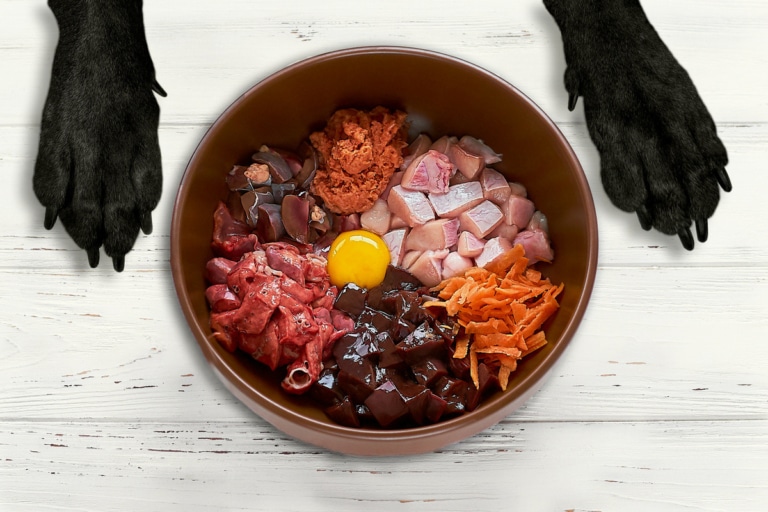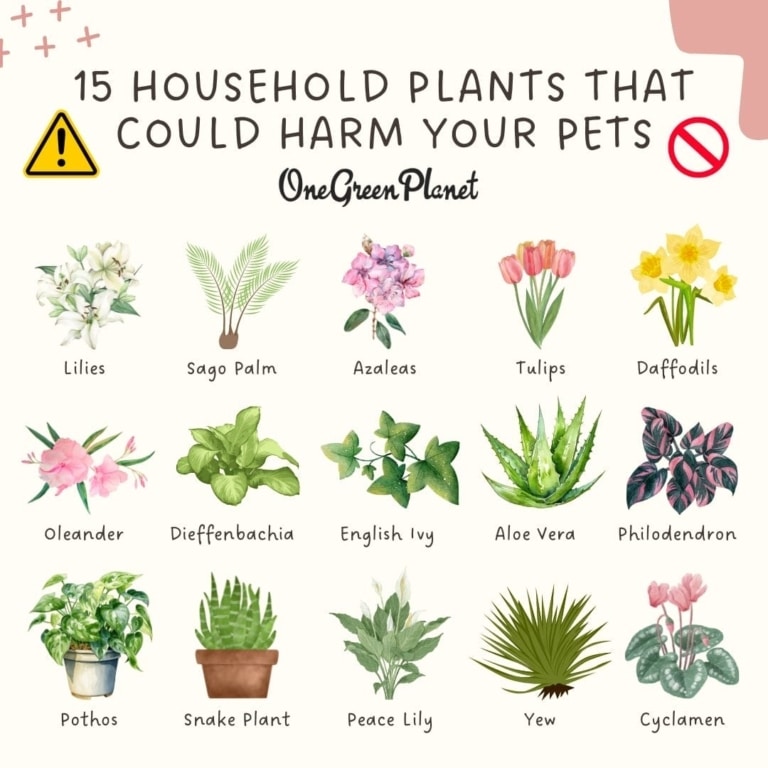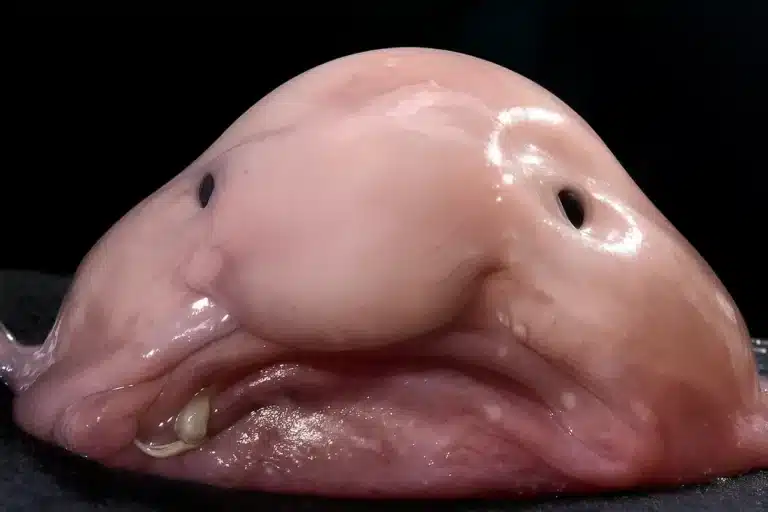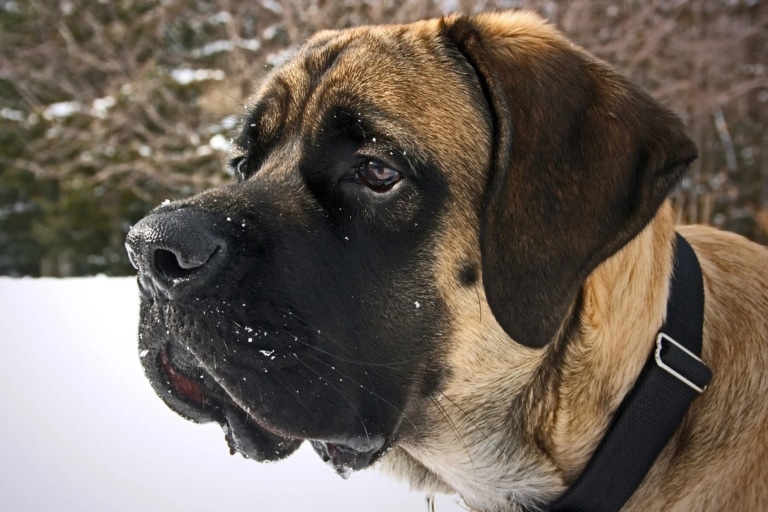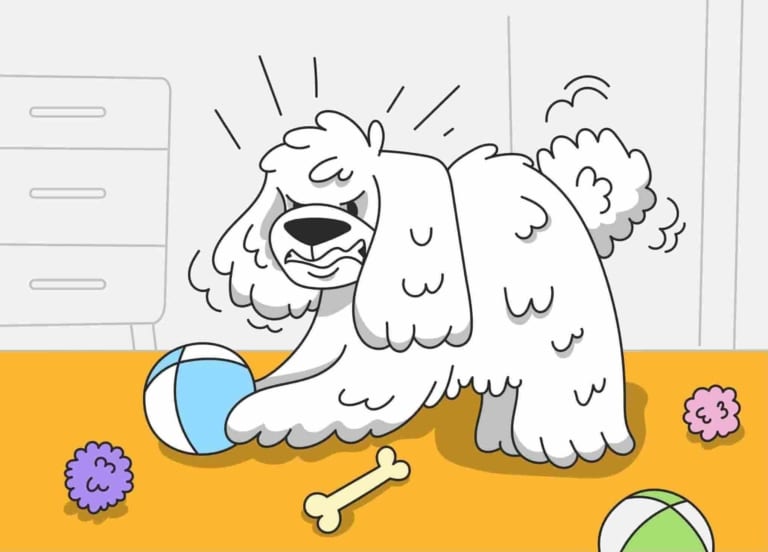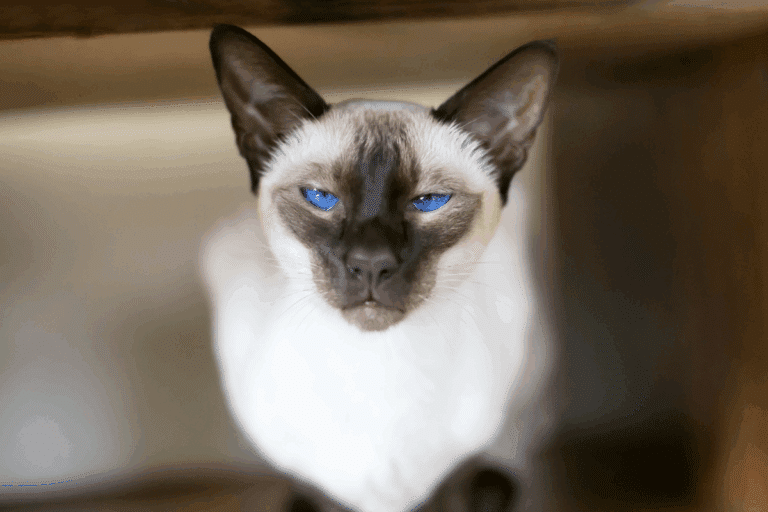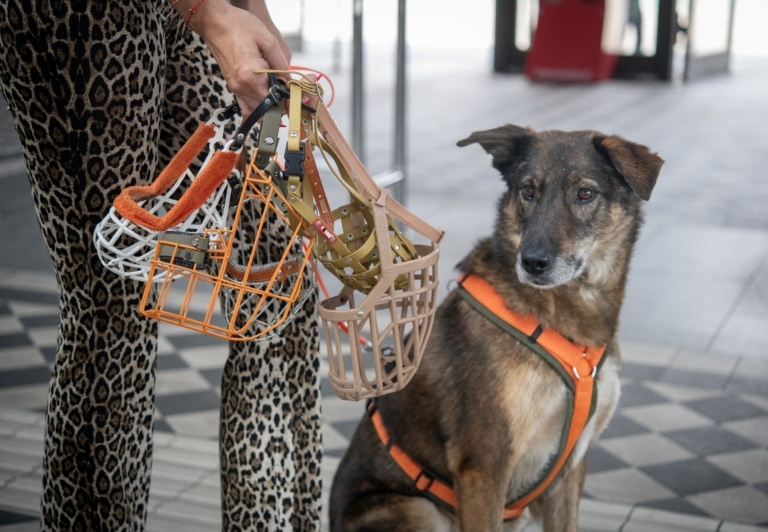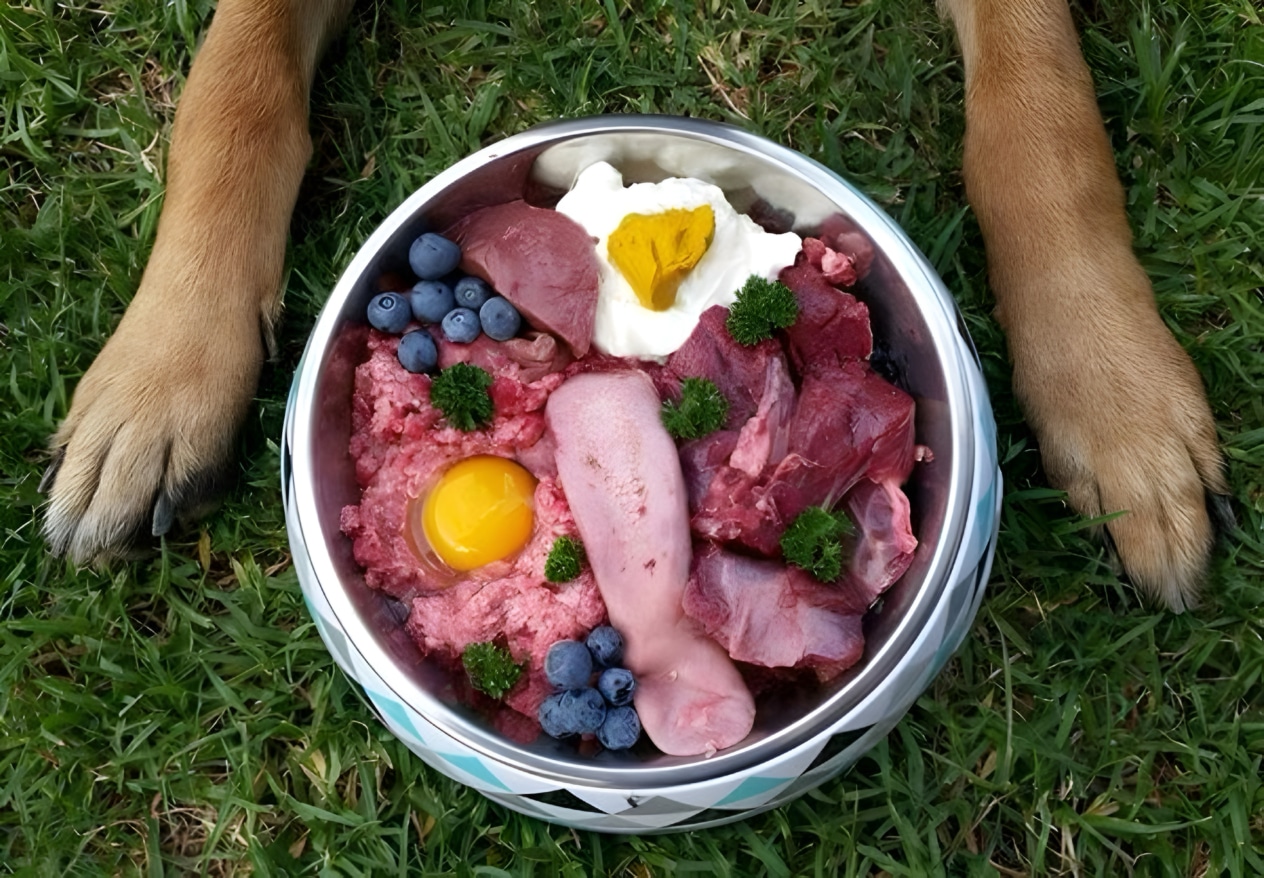
- Causes of hair problems.
- The role of nutrition for coat health.
- The importance of grooming.
- Tips for owners to maintain the results achieved.
- Conclusions.
There are quite a few factors that affect the beauty of your dog’s coat. One way or another, it is important to understand the causes of coat problems to help restore its beauty and healthy appearance. A comprehensive approach to this not insignificant issue is important, because the appearance of the Tail can speak of many things, both positive and negative. So what approaches should be applied to make your pet feel healthy and please you and others with its appearance?
Causes of hair problems
Unbalanced natural dog food is the most common cause of hair problems in dogs, if we do not take into account pathological causes. It is very important to pay attention to what kind of dog food your pet consumes. Always try to balance the different types of food so that the animal gets all the vitamins, nutrients, fats and proteins it needs. This will help the coat to be strong and shiny.
Avitaminosis can also lead to problems with the coat, namely: dullness of the coat, too much shedding, which as a result can cause local or even general baldness. Vitamins B, A and E are mainly responsible for the coat, because of their deficiency the quality of the coat deteriorates, and because of the excess of proteins the animal begins to lose it too actively.
Dry skin and dandruff significantly worsen the quality of wool. It becomes dull, dry and weak. Dry skin can be caused not only by a lack of vitamins. Often skin diseases are caused by fleas, worms, hormonal failures, diseases.
If you pay attention, the causes of hair problems in the dog are related. Unbalanced nutrition causes weakening of many body functions, avitaminosis, dry skin and worsens the general condition of the body as a whole. Therefore, it is very important to keep an eye on your Pet’s diet.
The role of nutrition for a healthy coat
Proper nutrition plays an important role in the quality of your dog’s coat. If you want to maintain or restore its beauty, we have some tips for you that will help in this regard. Since vitamins A, B, E, fats, carbohydrates and other beneficial elements are responsible for the quality of the coat, accordingly try to increase the intake of foods that are rich in these particular vitamins and nutrients. Mixed nutrition will help to achieve this, but just as with store food you need to select everything and even more carefully.
The coat is predominantly made up of protein, so you need to regularly enrich your dog’s body with foods that include it. These include turkey, chicken, lamb and beef meat; fish, especially fatty fish: salmon, mackerel; and eggs.
Vitamin A is important for coat and skin regeneration. In sufficient quantities it can be obtained from such products: liver, carrots, pumpkin, yams, spinach and broccoli. But be careful, an overdose of vitamin A is particularly dangerous, so liver should be given in small quantities and not daily.
B vitamins, especially B7 – biotin, B3 – niacin, B2 – riboflavin, are very useful for the coat. These vitamins are “hidden” in oats, liver, meat, especially turkey, beef and chicken, fish (tuna, salmon), spinach, broccoli, eggs and brewer’s yeast (there are special supplements for dogs based on brewer’s yeast). Eggs are recommended to be consumed boiled, if they are raw, they should be given cautiously.
Vitamin E helps maintain skin elasticity and gives shine to the coat. It is abundant in the following foods: various types of vegetable oil (flaxseed oil, sunflower oil, wheat germ oil), sunflower seeds, spinach, broccoli, fish and almonds, but almonds are best used in special forms for dogs in small quantities as they are very caloric.
There are foods that contain several of these vitamins at once, for example, liver contains both A and B; spinach contains both A, B and E. Many foods dogs do not consume in their normal form, particularly vegetables, so it is recommended to consume them as supplements. Here is an example of a balanced “plate” for a dog that will help maintain the lipid balance of the skin and the beauty of the coat. Let’s take a medium sized dog of 15-20 kg.
Balanced “plate”:
- Protein is the basis of the diet. This includes chicken fillet/ turkey/beef/fish – 40-50% of the plate.
- Vegetables – fiber and vitamins. This includes carrots, broccoli, zucchini, spinach – 20-25% of the plate. Vegetables should be boiled or stewed without salt or spices, as your dog is unlikely to want to taste them raw.
- Healthy fats. Add 1 teaspoon of flaxseed oil or fish oil to the main dish.
- Carbohydrates. They do not have a direct positive effect on coat quality, but they play an important role in the general condition of the body, which indirectly affects the coat as well. An excellent source of carbohydrates is rice or buckwheat – 15-20% of the plate. But it is necessary to use in moderate quantities.
- Additionally, you can use a boiled egg 1-2 times a week – to replenish protein and biotin, as well as liver – no more than 30-40 g. 2-3 times a week. The liver should be boiled or fried to avoid parasites entering the dog’s body.
Importance of grooming
Often when trying to treat a Four-legged from the inside out, to improve the quality of its coat, we forget that external grooming plays an equally important role. It’s worth remembering that each animal requires an individualized approach to coat care. It is not always easy to choose the right shampoos for the dog, which will nourish the coat and not dry out the skin, because we can give the animal the most properly balanced diet, but only because of the wrong shampoo or other products for the coat of the tail appears dandruff, the coat begins to fade and becomes stiff or generally molts. Also, if you do not cut and comb the animal regularly and properly, it can get pits, which in the end not only spoil the quality of the coat, but also negatively affect the skin. So what does grooming provide you with?
Firstly, it improves the quality of the coat. Regular brushing prevents the appearance of collars and stimulates the growth of a new healthy coat. Also, by massaging the skin, it distributes natural fat along the length of the coat, which makes it shiny.
Secondly, grooming helps to maintain healthy skin. This way irritation, rashes, parasites or dry skin can be noticed in the early stages. This allows faster action to be taken to prevent these problems. In other words, it is a prevention of skin diseases. A clean coat and skin reduces the risk of fungal infections, dermatitis and parasitic infestations (fleas, ticks).
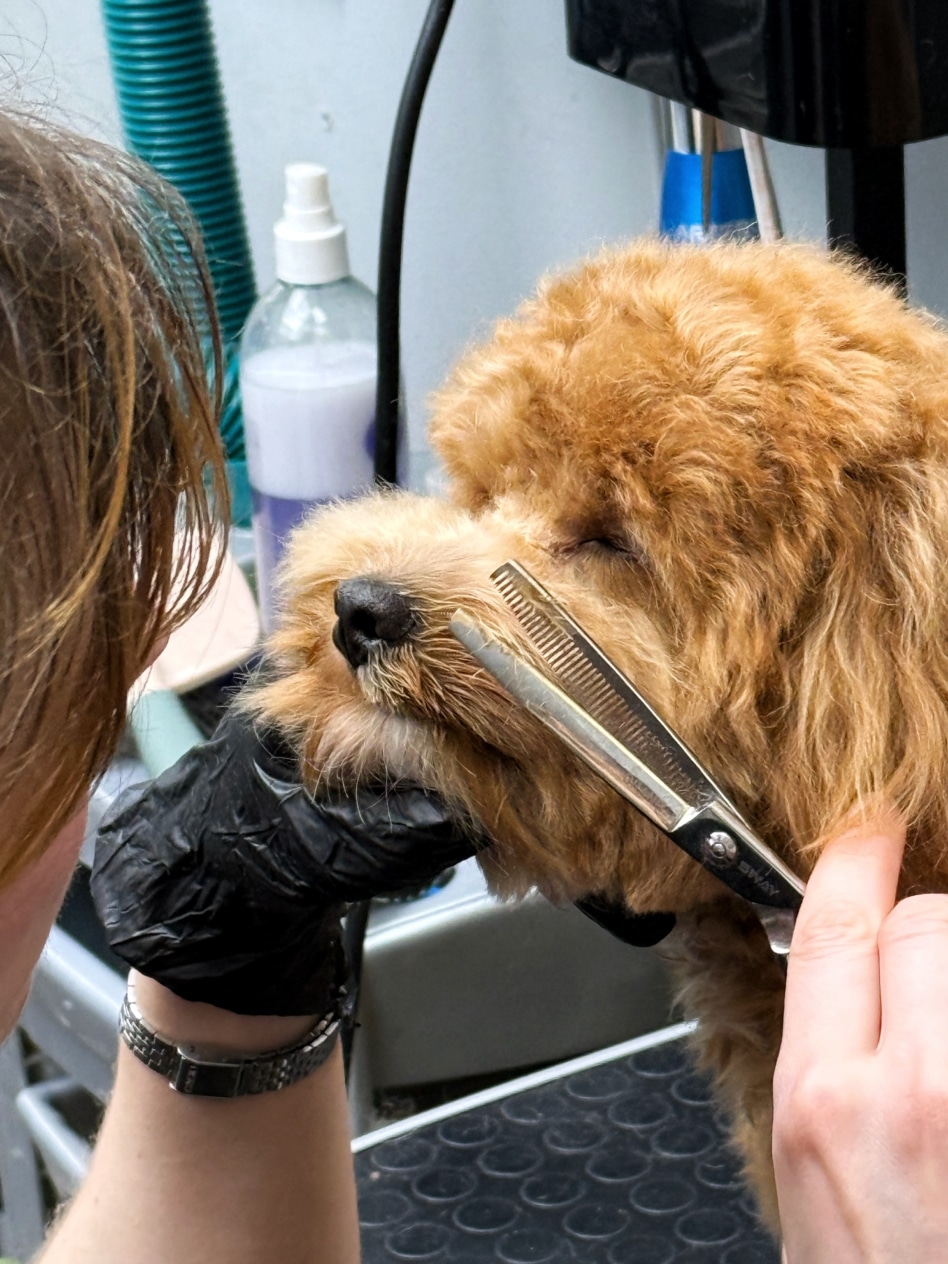
Dog grooming helps improve thermoregulation. Tangles or excessively thick, uncombed hair can interfere with the body’s ability to properly regulate body temperature. As a result, your pet may overheat in hot weather or freeze in cold weather.
And of course grooming affects a dog’s emotional comfort. Most dogs find regular grooming to be pleasurable and soothing.
Tips for owners to maintain the result.
In order to maintain the results achieved, you need to follow some rules that will help to keep your dog’s skin and coat healthy.
– Do not forget that your pet’s meals should be balanced and regular. Try to enrich the dog’s diet with all the necessary nutrients and vitamins. The basis of Tail’s diet should be natural food sources (meat, fish, vegetables, cereals).
– “Spoil” your dog and nutritional supplements. Usually they are enriched with those vitamins that are needed in your case.
– If you use additional store-bought dry dog food in your dog’s diet, pay attention to its quality. And also watch the reaction of the animal’s body, because sometimes some impurities can cause an allergic reaction in Tails.
– Do not forget about visits to the veterinarian. Sickly appearance of the coat and skin can speak not only about unsuitable care products, but also about health problems.

– Visit the groomer regularly. This will help keep your dog’s coat looking neat and beautiful, as well as prevent unwanted “guests” and skin conditions. At our V.O.G. DOG SALON grooming salons we often come across such cases, so our experts are already ready to help you solve the problem.
Conclusion.
So, a comprehensive approach plays a key role if your dog’s appearance has lost its freshness. It is important to combine proper and balanced nutrition with timely grooming and regular visits to the veterinarian to reach the goal and maintain the achieved result.

